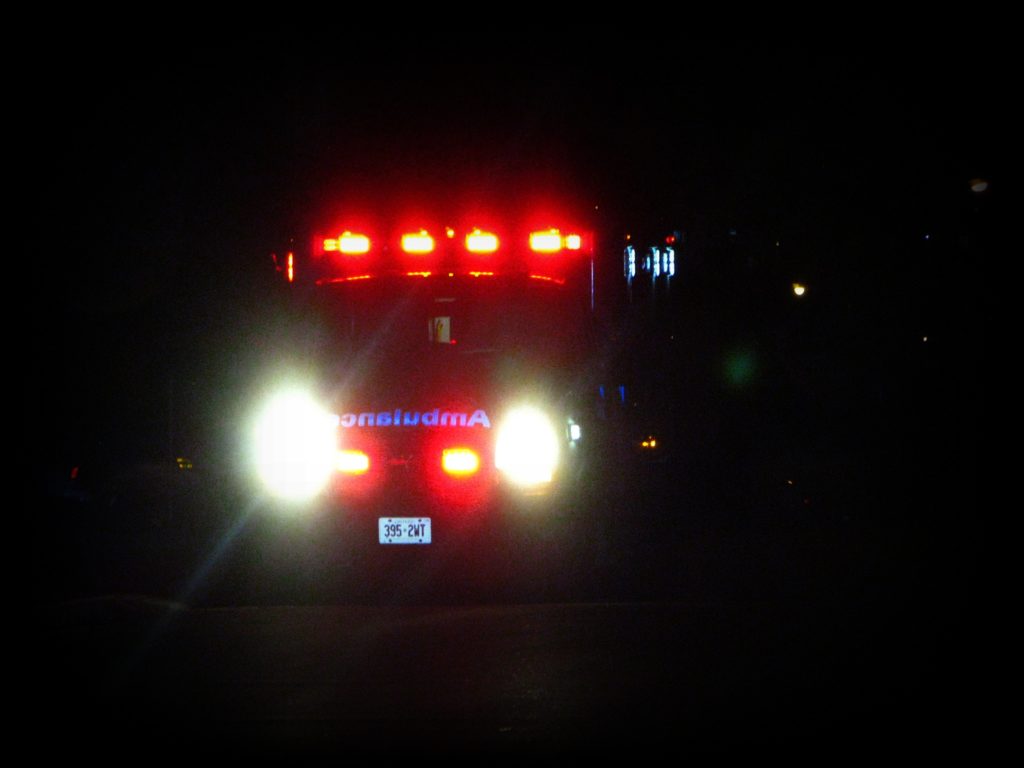Makana should have at least eight operational ambulances. There is no public information available about the Department of Health’s local emergency medical services, but it seems little has changed since a shocking 2015 report by the Human Rights Commission. Kathryn Cleary reports.
Two weeks ago Grocott’s Mail reported on the heartbreak of two Makana families as they waited in vain for ambulances. The Department of Health has declined to provide official confirmation about emergency medical services in Makana but estimates are that there are at most three serving this municipality’s approximate population of 80 391 over an area of 4 376 square kilometres.
A Hooggenoeg family recently waited nearly five hours for police and an ambulance to certify and collect the body of a family member , and an expectant mother in Alicedale waited more than two hours for an ambulance after going into labour in the early morning hours. She later died. The waiting times and tragic stories behind state ambulance services make it appear that emergency medical services (EMS) are a low priority for the government.
Sources have speculated that there are at most three operational ambulances in the area. After repeated correspondence with Eastern Cape Department of Health spokesperson, Lwandile Sicwetsha, our reporter was unable to confirm this.
Makana PR Councillor Cary Clark told Grocott’s Mail, “It is an appalling state of affairs that we only have two Metro ambulances which service not only Grahamstown (Makhanda) but Riebeeck East and Alicedale too.” Clark had assisted the family in Hooggenoeg before phoning for a private ambulance.
Fellow Makana Councillor Theo Bruintjies, said in a recent media statement, “Waiting for an ambulance to take a patient to Makhanda from Alicedale can take anything from three to five hours to more than a day. Most days there is only one functioning ambulance in [Makana].”
According to Bruintjies, an Alicedale woman waited three hours for assistance and passed away five days later after emergency surgery. Bruintjies said he believed the woman would have lived had the ambulance arrived sooner.
After reaching a dead end with the Department of Health, Grocott’s Mail spoke to the SAHRC and was referred to its 2015 report, Hearing Report on Access to Emergency Medical Services in the Eastern Cape . The report documents access to emergency medical services in the Eastern Cape.
“According to the National Standards as set out in the National Data Indicator Set (NDIS) released by the National Department of Health (DoH), the required number of ambulances is one… for every 10 000 persons in the province,” the report states.
The report said according to the 2011 census the population of the Eastern Cape was estimated at 6.56 million people. This meant “approximately 656 ambulances [are]required… in order for the ECDoH to be at an appropriate level”.
National Standards defines emergency services in terms of ambulances, and does not include planned patient transport (PPT) vehicles. The SAHRC report states that as of 30 June 2015, the province had a total of 446 ambulances, or 583 vehicles including PPT.
In the absence of DoH responses to update the figures in the SAHRC’s 2015 report, Grocott’s Mail infers that the province may be 210 ambulances short of what is required. Using the 2011 census population, this could equate to one ambulance per 16 000 people.
The 2015 report stated that in the Cacadu District (now Sarah Baartman) there were a total of 51 ambulances, with only 31 being rostered (operational).
The Sarah Baartman district encompasses nine municipalities, including Makana. According to the 2011 census the population of Makana was 80 391.
To comply with National Standards Makana should have at least eight operational ambulances, yet it’s rumoured there are at most three.
The 2015 SAHRC report concludes with recommendations inclusive of policy, ambulance services, patient transport, response times and other matters.
Eastern Cape SAHRC Manager Abongile Sipondo stated that they had been monitoring the department’s progress with recommendations made in the 2015 report. “We have engaged the department on several occasions around what the department is doing to implement the recommendations and also engaged them on some of their responses to those recommendations,” stated Sipondo.
Action on ambulances
SECTION27, a non-profit legal aid and human rights organisation has been advocating for improved EMS services across the country. The organisation’s Head of Health, Sasha Stevenson, said there was no public information available as to the number of localised ambulance services.
“At the SAHRC hearings in 2015, [it was]said that if an ambulance was not going to arrive in four hours, the Department could request a private ambulance company to provide the services,” said Stevenson. “However, it is unclear whether this option has been relied on, as there is no information in the budgeting and reporting documents for the outsourcing of EMS.”
Stevenson urged citizens to call the Head of EMS Directorate, Ashok Munilal, should they experience poor service delivery. Munilal may be reached at 060 572 9172 / 041 453 0911 or emailed at ak.munilal@echealth.gov.za
- Comments or tip-offs? Email Kathryn Cleary at ed7@ed.grocotts.co.za


